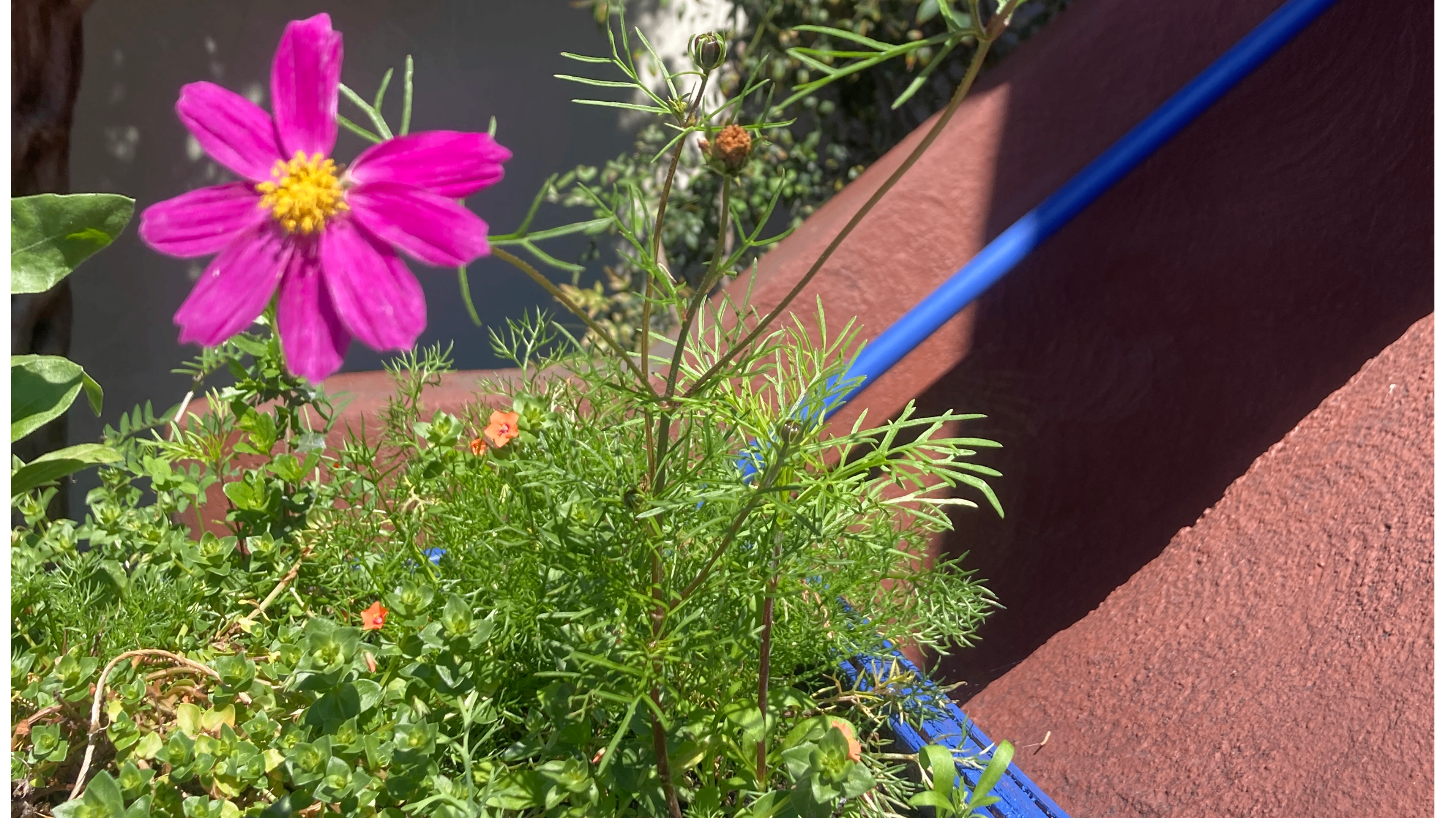Do you know which plants in your garden are toxic for pets? In this article, we’ll discuss the supposed toxicity of cosmos and how to create a small pet-friendly garden for your home.

It only takes a second for your dog or cat to wolf down a toxic bloom or leaf. Do you know which plants in your garden are safe for pets and which are poisonous?
A study on plant poisonings in domestic animals, carried out by the Poison Control Centre of Milan and the Veterinary Toxicology Section of the University of Milan, reveals that dogs are the most commonly poisoned pet species, followed by cats. Of 2,150 calls to the toxicology department related to toxic plants, 73% resulted in mild to moderate clinical signs, while 10.6% of cases were fatal.
With dogs and cats often willing to nibble on just about anything, accidental poisonings can occur quickly if toxic plants are part of your garden layout. The goal, therefore, is to create a pet-safe garden.
Ideally, having a pet-safe garden may mean avoiding popular flowers like azaleas. However, if you can't resist, you may want to consider strategic ways to grow such risky beauties without putting your furry companion in danger.
The first step to accomplishing this is choosing the right flora for your garden. "Our pets are curious by nature, often sniffing and sometimes nibbling on plants," said Kamala, the publisher of pet friendly online resource, Pets Can Go. "Therefore, it’s vital to choose non-toxic plants for your garden, ensuring that your pets can explore their outdoor environment safely."
One such plant is cosmos. Often mistaken as a danger to dogs, Kamala explained in her latest piece that the daisy-like flowers are actually one of the best "worry-free" options for building a pet-safe garden. "All parts of the cosmos plant, including the flowers, leaves, and stems, are safe if ingested by your pets," she added.
But what if you really want to grow some fan favorites that are not completely pet safe, Kamala says this is where strategic plant placement in out-of-reach containers or behind pet safe fencing can play a critical role.
"Designing a garden with pets like Lovie in mind means more than just choosing the right plants. It’s also about placing them strategically to minimize risks," she said. "For instance, placing cosmos and other non-toxic plants in parts of your yard where pets have unrestricted access and then limiting slightly less safe plants in areas where your pets are supervised and in locations that they can't access."
If a pet is proving too clever and bypasses natural barriers, Kamala advises setting up small fences or creating a container garden that can also be turned into decorative borders that add to the garden's aesthetics.
Kamala recognizes the threat of just having toxic plants around and advises pet owners to familiarize themselves with symptoms that merit a trip to the vet and when in doubt contact your vet (hopefully you have insurance, you may need it).
"If you suspect your pet has eaten a plant, take a deep breath and assess the situation," she said, "but it is better to be safe than sorry". So when in doubt, err on the side of caution.
However, she also said that symptoms like excessive drooling, vomiting, and sudden lethargy or weakness are tell-tale signs of toxicity, which require prompt action from a vet.
"First, don’t panic," Kamala advised. "But it’s always good to be cautious and monitor your pet for any unusual behavior. If you’re not sure what plant your pet has ingested, as they may have eaten something that grew wild that you didn't plant, or if they’re showing signs of distress, it’s time to take action."
This content is provided in partnership with Pets Can Go and is intended for informational purposes only. The views, opinions, and advice expressed in this article are solely those of Pets Can Go and do not necessarily reflect the views or policies of any other individual, organization, or entity.
